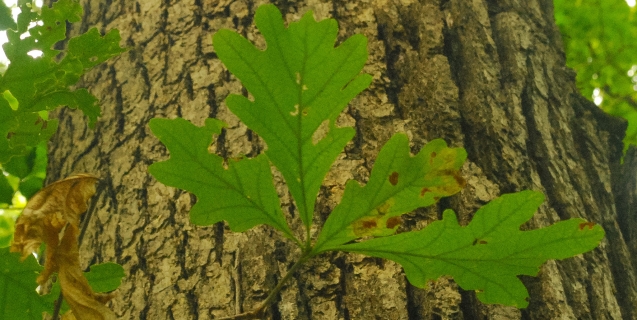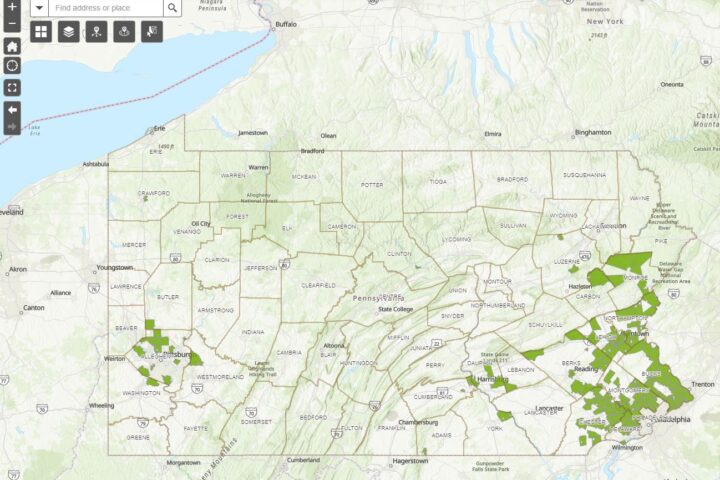“Whenever our West Pikeland EAC is present at a local event we give attendees a 2-3 ft White Oak tree to plant with the attached information sheet that educates them on the value of native species, pollinators and birds. We also give them written planting instructions.”
-Glenn Wenger, West Pikeland EAC

Photo by Joshua Mayer.
THE GREAT WHITE OAK
Pollinators Need You – You Need Pollinators
Birds, bats, butterflies, moths, flies, beetles, and most importantly bees are pollinators. They visit flowers to drink nectar and feed off of the pollen, and as they move from flower to flower they carry the male pollen with them. This fertilization process is the first step in the process that produces seeds, fruits, vegetables and nuts. It is estimated that 35% of the world’s food crops and 80% of the world’s plants rely on pollinators.
Habitat loss, disease, parasites, and environmental contaminants have resulted in the steady decline of many species of pollinators. Currently there is a grassroots movement across the nation to increase the number of pollinators by increasing the number of pollinator plants. We can all play a role in increasing pollinator plants. You can start by planting pollinator plants in existing gardens or take a section of your unused lawn to start a pollinator garden. Visit the Homegrown National Parks website www.homegrownnationalpark.org to learn more about how you can play a role in this movement.
Pollinator nymphs and caterpillars feed on the leaves and stems of the plant. Because of the coevolution of plants and insects it is important to plant native plants that can be used as food by native pollinators. Plants that support many species of insects are more valuable. This is where the White Oak comes into play. The White Oak serves as a food source for 537 species of butterfly and moth caterpillars which is more than any other genus of plants in North America – not to mention all the animals that feed off of the acorns. This is why it is called a “keystone plant”. In addition, the leaf litter decomposes and returns nutrients to the soil and provides shelter for many insects over the winter. In comparison, the non-native, invasive Callery Pear which lines many streets and is seen in several yards and developments has been found to support only one.
It takes between 4000 to 6000 caterpillars to fledge one family of chickadees. A 2019 Cornell ornithology study found there are approximately 3 billion fewer song birds in North America than there was 50 years ago. Less caterpillars means less birds. To
support birds and other life on the planet we need insects, especially pollinators…and they need us.
By planting a white oak, you will be growing a tree that provides many benefits to our entire ecosystem.
PLANTING INSTRUCTIONS
1. Select a good location. A white oak can grow to a height of 50-80 feet, and a spread of 50-80 feet. Keep away from sidewalks, driveways, and sewer lines.
2. Untangle the roots and soak in water for two hours.
3. Dig a hole twice the size of the root width and a few inches deeper. The root should fit passively into the hole.
4. Place soil firmly around the root.
5. Remove a 3-foot diameter of vegetation around the tree.
6. Water until the soil in the hole is saturated.
7. Place 2 inches of mulch in the 3-foot diameter. Do not let the mulch touch the tree.
8. Water the tree once a week for 6 weeks and thereafter as needed.



